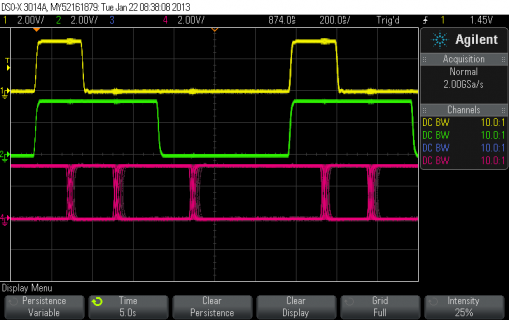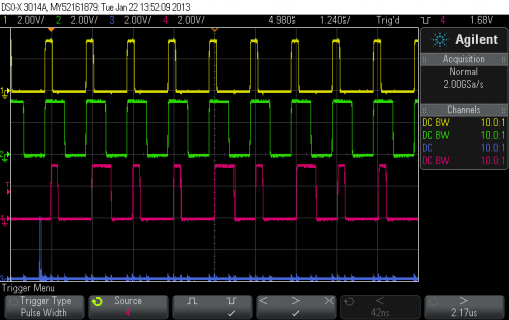neep
Well-known member
I just found this thread and it got me very excited! My project is a pair of LED staffs that should also be able to do POV, so fast refresh is required. When I initially researched what LED strip to get, I was still using only Arduinos at 16MHz and I read that the timing wouldn't be accurate enough for the WS2811 strips. So I went with a WS2801 + FastSPI which works great, but as I don't have that much space on the staff I now only get 8 pixels per side (3 strands of 8 separated by 120 degrees to make it visible from every direction). Having double that density would be much prettier of course. I now have a Teensy 3.0, and reading the above makes me confident I should be able to drive a WS2811 strip, so I'm going to try for that.
I also would like to be able to drive an SD reader (the one from PJRC) *and* a WS2811 strip at the same time, somehow. Would it be an idea to have an SD adapter that connects to I2C, instead? Okay, that is for another thread.
Also for another thread I suppose is whether I would be okay with about 1200mAh for driving 96 (3 x 16 x 2) WS2811 driven LEDs + a Teensy 3? I wouldn't be running this at full power, and I really only need about 2 hours worth of charge.
I also would like to be able to drive an SD reader (the one from PJRC) *and* a WS2811 strip at the same time, somehow. Would it be an idea to have an SD adapter that connects to I2C, instead? Okay, that is for another thread.
Also for another thread I suppose is whether I would be okay with about 1200mAh for driving 96 (3 x 16 x 2) WS2811 driven LEDs + a Teensy 3? I wouldn't be running this at full power, and I really only need about 2 hours worth of charge.




